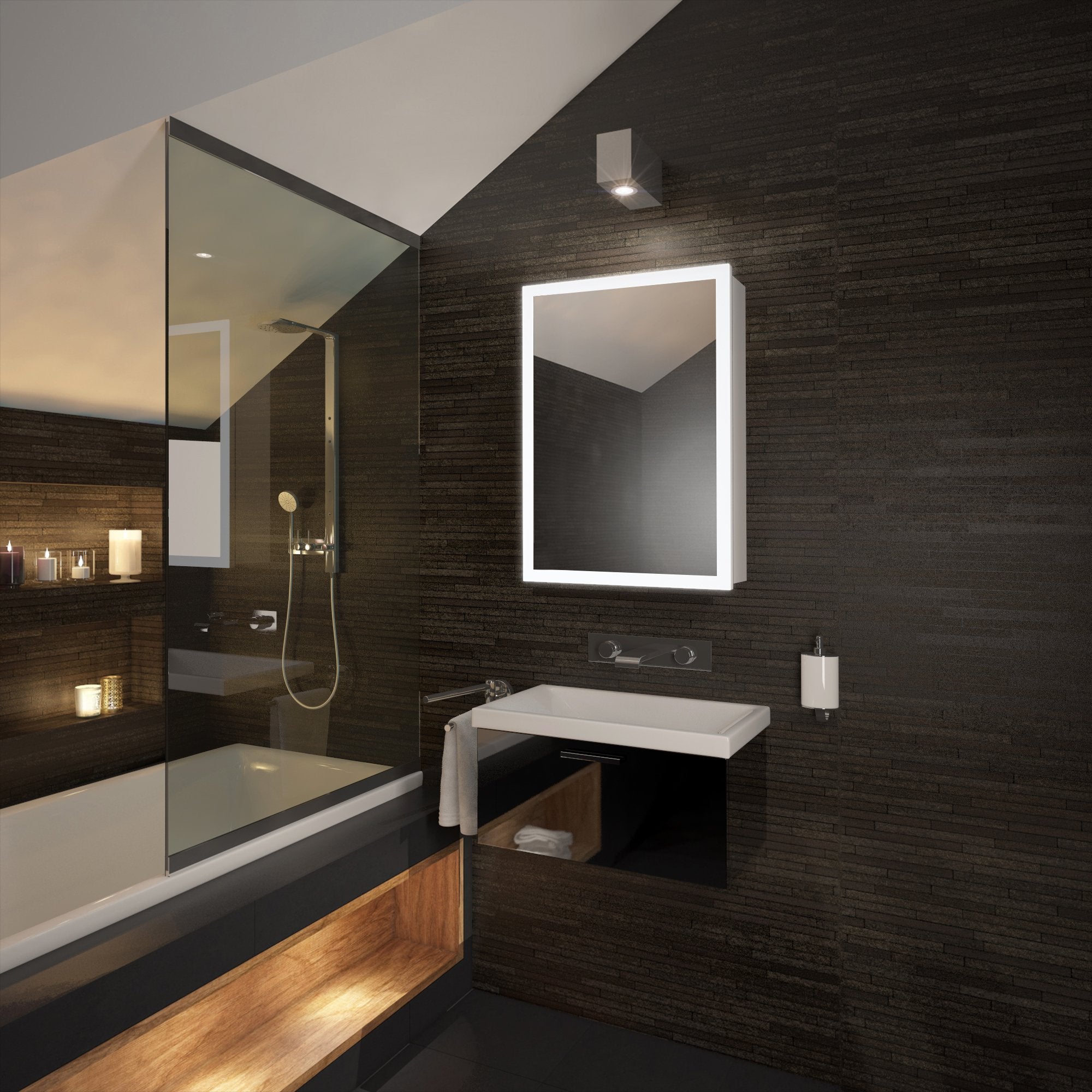Is bigger always better? This of course depends on the matter in hand; when it comes to bank balances, data allowance and social media followers the answer is usually a yes. But small has its merits too; I would take a small to-do list over a big one any day. As an interior designer ‘Big versus Small’ is a debate I face every day. Look for instance, at small format wall tiles. Once relegated to kitchen splashbacks and that awkward area surrounding a bathroom sink, the small format tile is making a massive comeback. In recent years they have been somewhat shunned by homeowners and property developers who want to achieve a contemporary look and give their homes a spacious and sleek feel. But in what can only be described as the David versus Goliath of the homewares market, these small, yet perfectly formed pieces of ceramic and porcelain are fighting back.
Two tribes
Decorative tiles fall into one of two categories, small and large format, with large format being any tile with one side over 40cm long. Once found in kitchens and bathrooms, tiles are becoming popular throughout the home, helping to unify spaces and create a continuous look that can make a property feel more spacious. Now up until very recently large format tiles were overwhelmingly the go-to tile for this job. However, I am finding more and more of my interior design clients are embracing smaller options.

This is in part due to the wealth of tile ranges now available. Once upon a time homeowners were limited to small square tiles in a standard size, now tiles are available in all manner of shapes and sizes, some plain, some patterned but all striking if laid correctly. Which is easier with smaller tiles than their larger counterparts. For large tiles to look truly stunning, a lot rides on the condition of the surface they are being applied to. Flat walls are an absolute must, otherwise you’re going to get some serious lippage. This is when tiles stick out because of an uneven surface or bad fitting and it looks rotten. However, with smaller tiles this isn’t as much as an issue.
Gr-out witted
Part of the appeal of larger tiles is they need less grout – which means less maintenance as tiles are much easier to clean than grout. However, the surge in popularity of metro tiles – small brick shaped tiles – in both commercial and residential settings has shown how savvy interior experts are now making a feature out of this once frowned upon nuisance.

Tile grout is available in a plethora of different shades so why not go bold and team a brilliant white metro tile with black grout for a striking bathroom. If you want to stick with traditional colouring why not consider beige or ivory grout instead of plain white for a more subtle finish?
General Pattern
The possibilities with small format tiles are endless. Unlike their larger counterparts they can be laid in all manner of versatile ways to create beautifully intricate patterns. A busy pattern in a small space can be overwhelming, so why not break up heavily patterned designs by teaming them with a plain tile; or jump on one of this season’s biggest trends and opt for a simple symmetrical grid layout. For a more bold option go for a multi-format option and pair tiles of the same colour but different shapes and sizes for a bespoke wall covering unique to your home.

After all, it’s not the size that matters – just what you do with it.
Lesley’s Top Tips for the Perfect Tile Job
- Consider your budget. Large format tiles are usually more expensive per tile but smaller tiles can be more costly in bulk. Look at the cost per metre square before making a decision.
- Large tiles can make a room feel spacious but they can also overpower a small space.
- Unless you are an expert DIY-er, get a professional in to fit the tiles.
- Try out all possible pattern configurations before you start




Leave a comment